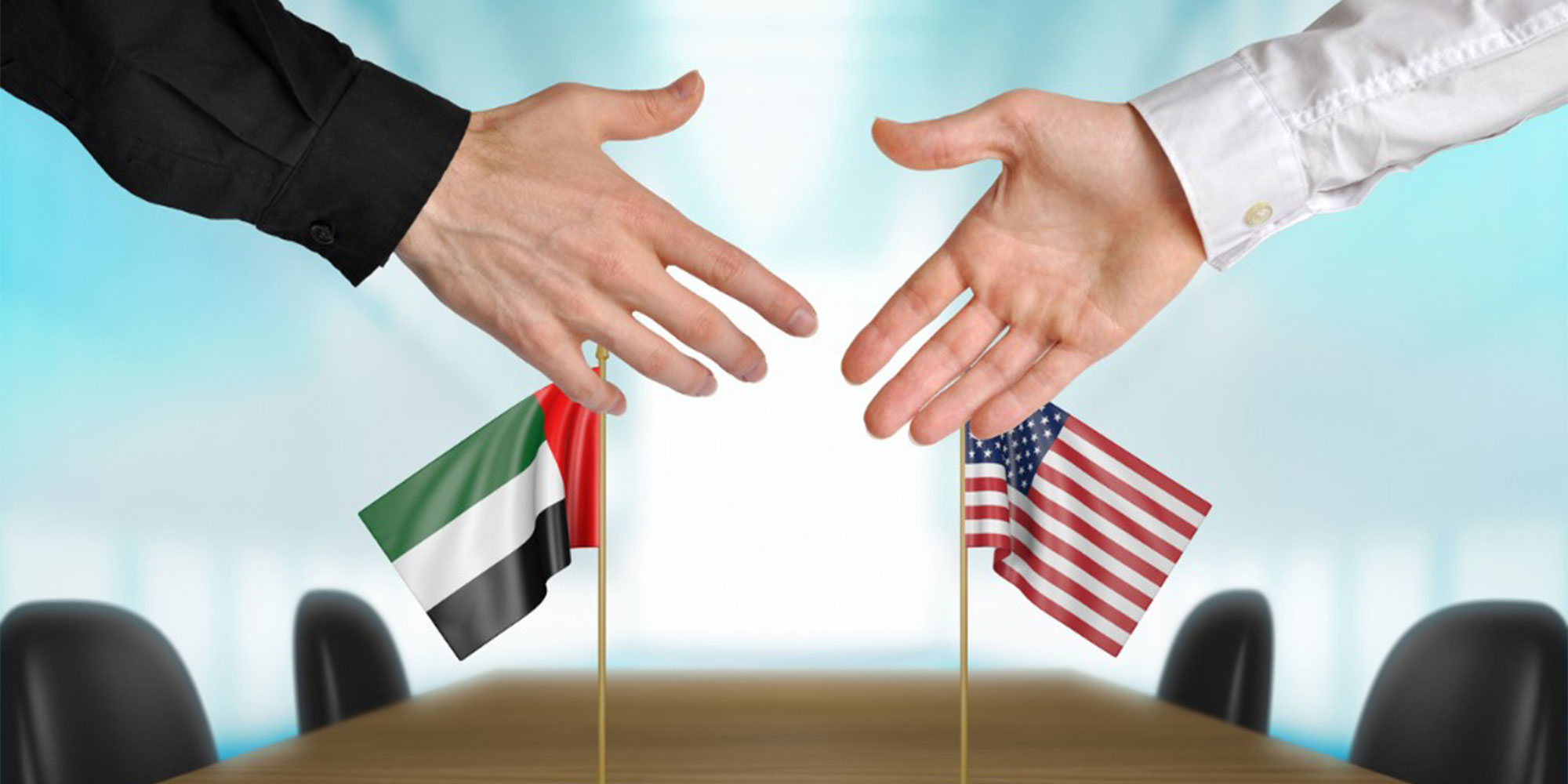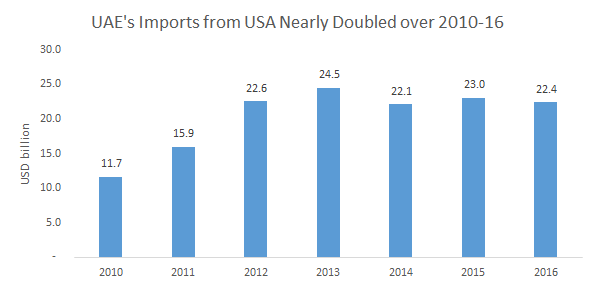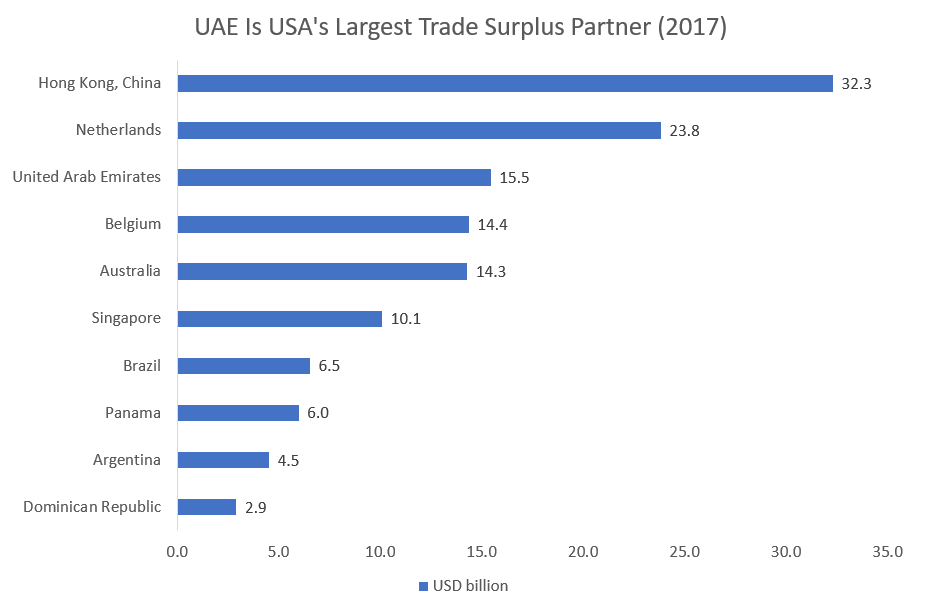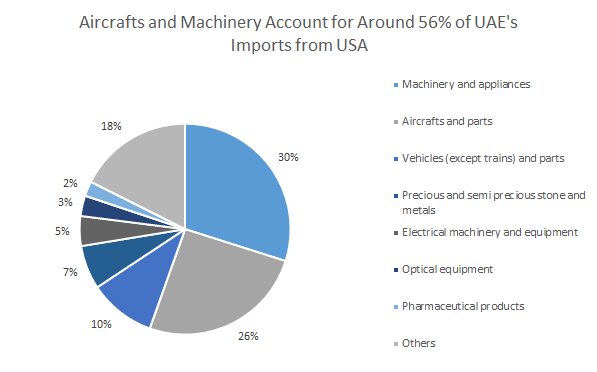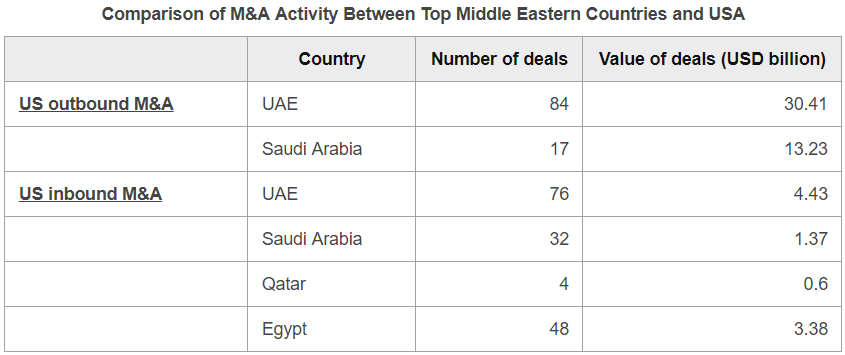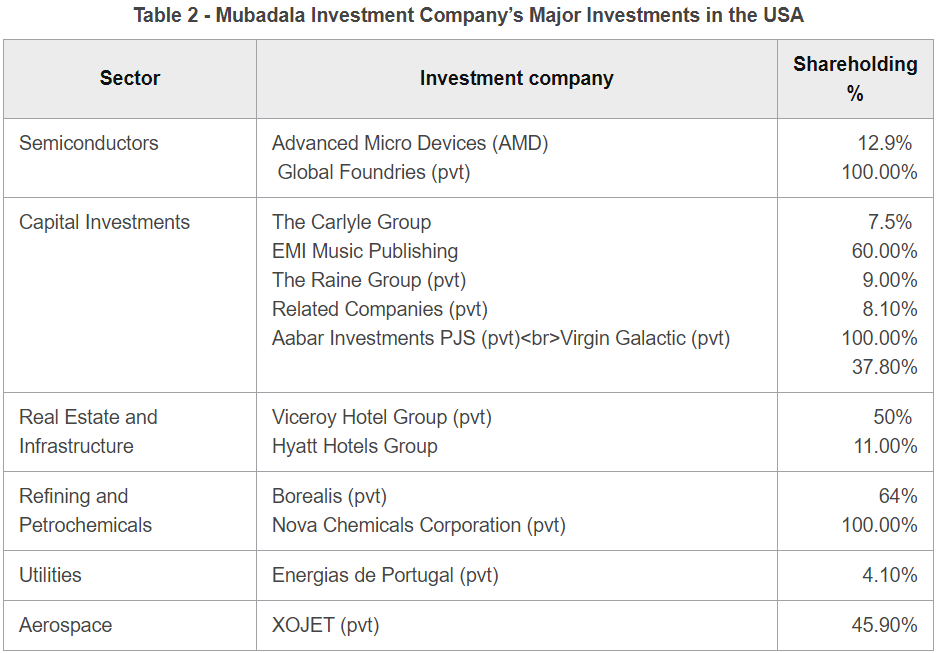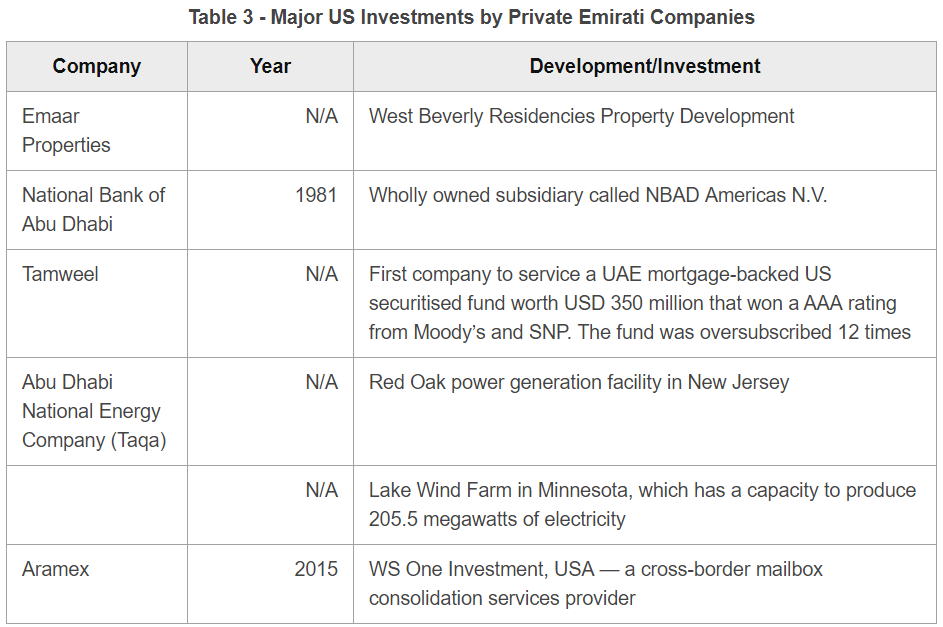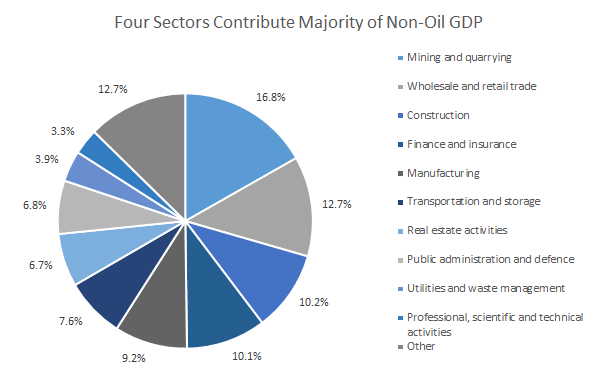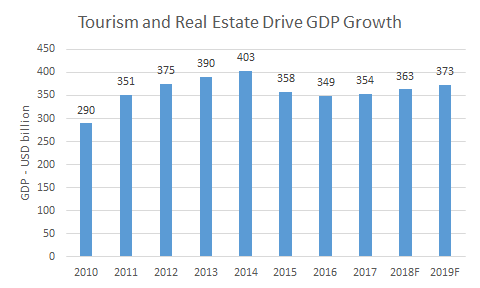The UAE’s Growing Love Affair with the US
|
Since its founding in 1971 as a federation of seven emirates, the United Arab Emirates (UAE) has grown to be the third-largest economy in the Middle East. It reported USD 348.7 billion in GDP as of 2016, behind Saudi Arabia and Iran. Initially dependent on oil, the country has made significant efforts to diversify its economic activities. As a result, non-oil sectors accounted for 83.2% of its total GDP in 2016, boosted by the travel and tourism sector (details available in Appendix 2). |
|
The UAE currently ranks second in terms of sovereign wealth fund (SWF) assets, of which it held USD 1.3 trillion as of 2016 (18% of global assets), behind only China. It also owns the third-largest SWF in the world – the Abu Dhabi Investment Authority (ADIA) – which is also the largest fund in the Middle East, with assets worth approximately USD 828 billion. |
|
Over the past 18 years, the UAE has been the Middle East’s largest investor in the USA, accounting for about 1–2% of the USA’s total investable assets owned by foreign residents, according to our estimates. Most of these investments are in the real estate industry, which is the largest industry in the US economy, contributing around 13% of the country’s GDP in 2017. Further, the UAE’s foreign direct investment (FDI) stock in the USA has increased fourfold over the past ten years, growing faster than any other Middle Eastern country’s and totalling over USD 26 billion as of 2016. Its trading relationship with the USA has grown 100% during the past decade, with the UAE establishing trade ties with every single state. At the core of this trade relationship is commercial aviation, with the UAE’s main airlines being the largest international buyers of Boeing aircraft. Further, this sector accounts for nearly 26% of the USA’s exports to the UAE. |
|
Lastly, since 2000, the UAE has experienced the highest level of M&A activity with the USA (both inbound and outbound) among all Middle Eastern countries, indicating the keen interest UAE investors have in the USA and vice versa. Given recent tax reforms and the positive outlook for the US economy over the next few years, foreign investment in the USA is likely to increase, further strengthening this relationship in the future. |
|
UAE the Largest Middle Eastern SWF Investor in USA; Focusing on Real Estate |
|
UAE’s SWF the Largest in the Middle East and Among Global Top Ten |
|
An SWF is a government-owned entity that sources its funds from the country’s balance of payments, fiscal surpluses, and capital reserves. The world’s first SWF was founded in Kuwait in 1953, followed by other oil-producing countries in the Middle East. SWFs in the Middle East, formed about 38% of global SWF wealth as of 2017, with collective wealth of more than USD 3 trillion, according to the Sovereign Wealth Fund Institute. |
|
Ranked by country, the UAE is the second-largest owner of SWFs, behind only China. Ranked individually by fund, ADIA is the third-largest SWF in the world, behind Norway’s Government Pension Fund Global and China Investment Corporation. As of 2017, there were five main sovereign funds in the UAE, with assets totalling USD 1.3 trillion, or nearly 18% of global SWF assets. |
|
|
|
Source: Compiled by UZABASE based on various materials |
|
|
|
Source: Compiled by UZABASE based on various materials |
|
UAE’s SWFs Have Significant Investments in USA, Predominantly in Real Estate |
|
While disclosure about the investment portfolios of Middle Eastern countries is highly limited, rough estimates based on available disclosure show that the UAE has the highest value of investments in the USA – including SWF investments, stocks, bonds, real estate, and technology. |
|
The table below summaries the value of investments made by the top three Middle Eastern countries. The first section shows the investments (based on the disclosure available in various US official sources), which include (1) FDIs in the USA, (2) long-term investments in US debt securities, and (3) the value of assets of US-based affiliates belonging to each country. This analysis shows the UAE to be the highest Middle Eastern investor in the USA as of 2016. |
|
|
|
Source: Compiled by UZABASE based on various materials |
|
While the value of total investments is not disclosed, it can be estimated that the UAE’s SWFs have invested a significant portion of their funds in the USA. This is evident from ADIA’s asset allocation disclosure, where its long-term investment policy aims to allocate 35–50% of its funds of around USD 828 billion in North America, which we believe mainly entails the USA. Further, Mubadala Investment Company (MIC) has an over 5% stake in at least 15 listed corporations in the USA (details of these investments can be found in Appendix – Table 2). |
|
Assuming that MIC and Abu Dhabi Investment Council have asset allocation targets similar to ADIA’s, we estimate that the UAE’s total investments in the USA could fall in the range of USD 350–550 billion. This is about 20–80% higher than Kuwait’s USD 300 billion worth of total assets in the USA (as officially disclosed by the Kuwait Investment Authority [KIA]). Official figures for Saudi Arabia were unavailable. Overall, this means that the UAE’s SWF investments in the USA amount to 1–2% of total US assets owned by foreign parties, which was USD 32.2 trillion as of 2016. |
|
Further, based on the values of the disclosed SWF investments by the UAE in the USA, we estimate the UAE’s total investment in the USA to be at least USD 400 billion, although it could be much higher (as the value of some investments are not disclosed). This is over 30% higher than Kuwait’s USD 300 billion worth of total assets in the USA, as per the KIA’s official disclosure. Official figures for Saudi Arabia were unavailable. |
|
|
|
Source: Company filings |
|
We note that a considerable portion of the UAE’s investments are in real estate, which is the leading industry in the USA as of 2017, accounting for 13% of the country’s GDP (see Appendix – Table 1). This is evident from ADIA’s main investments in the USA, with over USD 2 billion worth of real estate investments in Manhattan alone. In 2016, ADIA also closed its London office, which had been in operation for more than 20 years, and put some of its Canary Wharf estate up for sale. This could be an indicator that the fund is reducing its focus on Europe (the second-largest component of regional asset allocation) and that it could divert more wealth towards US investments instead. |
|
The Investment Corporation of Dubai (ICD; the UAE’s second-largest SWF) has five major holdings in North America, two of which are the W Hotel in Washington D.C. (fully owned) and the Mandarin Oriental Hotel in New York (68% stake). |
|
|
|
Source: Compiled by UZABASE based on various materials |
|
UAE FDIs in USA Quadrupled During 2006-16; UAE Leads MENA |
|
In terms of FDI, the UAE is the USA’s largest source of FDI from the Middle East and North Africa (MENA) region and overall the seventh fastest-growing source of FDI in the USA. The UAE is also the second-largest buyer of defence hardware and services from the USA, with spending exceeding USD 20 billion over the 2006-16 period, second only to Saudi Arabia. Although the UAE’s FDIs into the USA represent less than 1% (approximately 0.7%) of total FDIs in the USA, in terms of value, the cumulative inward FDI stock quadrupled during the past ten years to USD 26.3 billion in 2016, from USD 6.1 billion in 2006, implying a CAGR of 15.8%. The six sectors with the largest number of Emirati FDI projects are (1) financial services, (2) transportation, (3) real estate, (4) communications, (5) coal, oil, and gas, and (6) aerospace. |
|
|
|
Source: Select USA |
|
Some of the UAE’s largest private companies have also made significant investments in the USA, in various sectors such as financial services, real estate, power generation, marine transportation, and international delivery services (see Appendix – Table 3). |
|
Further, in early 2018, Abu Dhabi’s Aldar Properties announced a joint venture with Emaar Properties (Dubai) to carry out international and local property developments worth more than USD 8 billion. |
|
Among Middle Eastern countries, the UAE had the highest FDI stock in the USA as of 2016. It also reported the fastest-growing FDI contribution from Middle Eastern countries over the past ten years. |
|
|
|
Source: Select USA |
|
US-UAE Trade Relationship Grew Around 92% in Six Years, Driven by Aviation Sector |
|
Since 2009, the UAE has been the largest importer of US goods and services in the MENA region, outpacing even India, which has a population of 1.3 billion compared with the UAE’s 9.5 million. The US-UAE trade relationship grew nearly 92% over 2010–16; it was valued at USD 22.4 billion in 2016. |
|
|
|
Source: United States Census Bureau |
|
The UAE is the USA’s third-largest trade surplus (i.e. net trade balance) partner and the only Middle Eastern country in the top ten, supporting more than 104,000 American jobs. Of US exports to the UAE, 30% are in the aerospace industry, totalling USD 6.5 billion as of 2016. The UAE also has a trade relationship with every state in the USA, the largest being Washington (accounting for 18.6% of exports to the UAE), followed by Texas (9.3%) and New York (8.5%) as of 2016 (see Appendix – Table 4). |
|
|
|
Source: UNComtrade |
|
The UAE has maintained its status as the USA’s largest export market in the Middle East for eight consecutive years, valued at USD 22 billion in 2016. The UAE also pegs its currency, the dirham, to the US dollar, providing more stability to the trade relationship. |
|
Commercial aviation relations between the two countries are the core of their economic relationship, according to the UAE’s Ambassador to the USA. The UAE’s main airlines – Emirates, Etihaad, and FlyDubai – are the largest international buyers of Boeing aircraft, having collectively purchased more than 800 aircraft to date. As of 2016, aircraft and related parts were the USA’s top export category to the UAE, making up almost 26% of all exports. Other major categories include electric machinery, TV/sound equipment, vehicles, nuclear reactors, natural pearls, and precious metals. The UAE is also one of the largest buyers of US defence hardware and services over the past ten years, with purchases totalling over USD 20 billion. |
|
|
|
Source: UNComtrade |
|
|
|
Source: UNComtrade |
|
UAE Posts Highest Level of Inbound and Outbound M&A Activity with USA |
|
During 2000–18, the USA had the highest level of M&A activity (both inbound and outbound) with the UAE, among all the Middle Eastern countries. In terms of the number of deals, the USA’s M&A activity with the UAE was nearly five times that with Saudi Arabia, which posted the second-highest activity. The UAE also had the highest number of M&A deals closed in the USA during this period, over 1.5 times compared to Egypt, the second-largest acquirer of US companies. In terms of value, the USA’s acquisitions in the UAE were more than twice that in Saudi Arabia. |
|
|
|
Source: Institute for Mergers, Acquisitions, and Alliances |
|
APPENDIX 1 |
|
|
|
Source: Bluewater Credit |
|
|
|
Source: Compiled by UZABASE based on various materials |
|
|
|
Source: Compiled by UZABASE based on various materials |
|
|
|
Source: Embassy of the United Arab Emirates, Washington D.C. |
|
APPENDIX 2 – UAE’s Rise to the Global Stage |
|
UAE’s Economic Growth Focused on Non-Oil Sectors; Boosted by Travel and Tourism Sector |
|
Founded in 1971, the UAE is a federation of seven emirates – Abu Dhabi (the capital), Dubai, Sharjah, Fujeirah, Ajman, Ras al Khaimah, and Umm al -Quwain. The government comprises the Federal Supreme Council (which includes the rulers of the seven emirates) and a council of ministers. Abu Dhabi is the largest of the emirates, contributing around 60% of the UAE’s’s GDP and around 38% of its population of close to 9.4 million. Dubai is the second-largest, accounting for nearly 30% of the population. |
|
Over the past 20 years, the country has made significant investments to develop shipping ports, airport terminals, and business and education centres, and these have paid off in the long run. Not only has this reduced the UAE’s dependence on its oil reserves, but it has also established the country as a regional business hub. The aviation sector has developed significantly as well, with the country’s two leading airlines – Etihaad and Emirates – connecting more than 200 destinations directly to the UAE. Part of this progress has been the establishment of 20 free-trade zones, allowing foreign companies 100% ownership and tax exemptions. |
|
The UAE is the second-largest gulf country, after Saudi Arabia, and ranks 20th in the world in terms of GDP per capita (USD 38,650 in 2016). Its international trade value is also four times its GDP, alongside only two other countries in the world that hold this distinction: Hong Kong and Singapore. Since 1988 (except during the financial crisis of 2008–09), the UAE has maintained consistent double-digit YoY growth in international trade figures. |
|
During 2010–14, the country’s GDP increased at an 8.6% CAGR to USD 403.1 billion in 2014, driven by rising oil prices. However, this growth was followed by a two-year CARC of 7.0% to USD 348.7 billion as oil prices crashed to 2009 levels of around USD 30 per barrel in 2016. Since then, the rise in oil prices once again to around USD 55 in 2017 boosted GDP growth by 1.5% YoY to USD 354.0 billion. |
|
While oil and natural gas remains the largest contributor to GDP, it was only 16.8% as a percentage in 2016, compared with 31.1% in 2010. On the other hand, non-oil sectors contributed 83.2% of total GDP in 2016, compared with 68.9% in 2010. Apart from crude oil, wholesale and retail trade, construction, financial activities, and manufacturing contribute just over 42% of GDP, in similar proportions. In terms of economic contribution to total output in 2017, the services sector accounted for 48%, followed by oil extraction (29.9%), construction (9.4), and the manufacturing of goods (7.9%). The remaining 4.8% was from agriculture, utilities, and other ancillary sectors, as reported by Oxford Economics. This can be attributed to the UAE’s efforts to diversify away from its dependence on oil and boost the tourism and property sectors. |
|
|
|
Source: Federal Competitiveness and Statistics Authority |
|
GDP growth during 2016–19E is estimated by Coface (a global credit insurer) to slow to a CAGR of 2.3% due to fiscal consolidation (via the introduction of electricity tariffs and the deregulation of energy prices) and an expected fall in oil output as a result of the agreement with OPEC to reduce production levels. This agreement was made between OPEC and non-OPEC members in November 2016 and was expected to end in March 2018. However, as shale oil production in the USA continues to rise, oil production cuts in the UAE are to continue at least until the end of 2018 and possibly beyond that, according to the Ministry of Energy and Industry. |
|
|
|
Source: Federal Competitiveness and Statistics Authority |
|
The travel and tourism sector contributed 11.3% to the UAE’s GDP in 2017, according to statistics by the World Travel and Tourism Council (WTTC). In the same year, the sector supported 4.9% of total employment, which is estimated to increase to 10.2% by 2028E. The UAE government invested 8.2% of total national investment in the travel and tourism sector in 2017, and this is expected to rise to 11.2% in 2028E. Further development of the Maktoum International Airport and the continuous rollout of new retail and leisure attractions are expected to fuel further growth in the sector. |
|
Expo 2020 is a six-month-long global expo set to be held in the UAE in 2020. This event is expected to bring in over 22 million tourists to the country and has also paved the way for a healthy pipeline of projects totalling USD 705 billion over 2016–26E. It is already playing an important part in the development of non-oil sectors such as construction, real estate, hospitality, tourism, transportation, and infrastructure. The country’s 2021 vision includes making the UAE an “economic, touristic, and commercial capital for over 2 billion people” and bringing Dubai to be “among the top five centres for trade, logistics, finance, and tourism”. |
|
|
|
Source: Federal Competitiveness and Statistics Authority |
|
Note: Figures from 2018 onwards are estimates |
